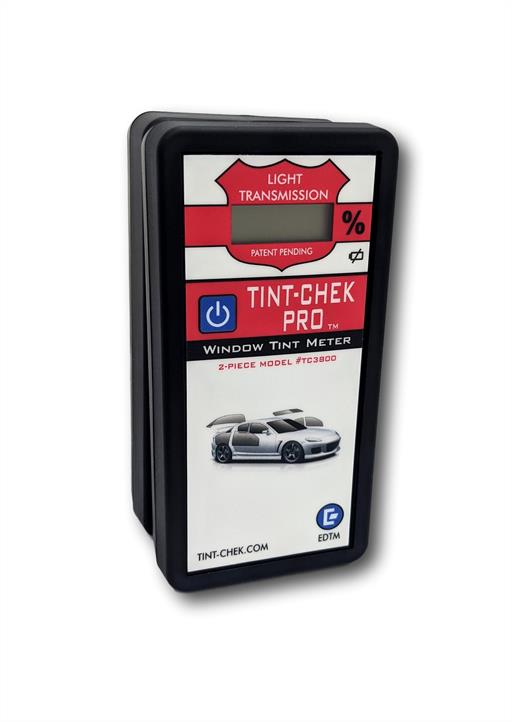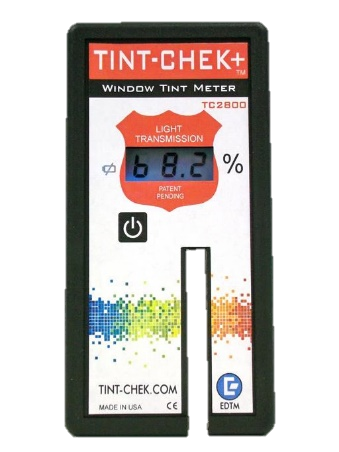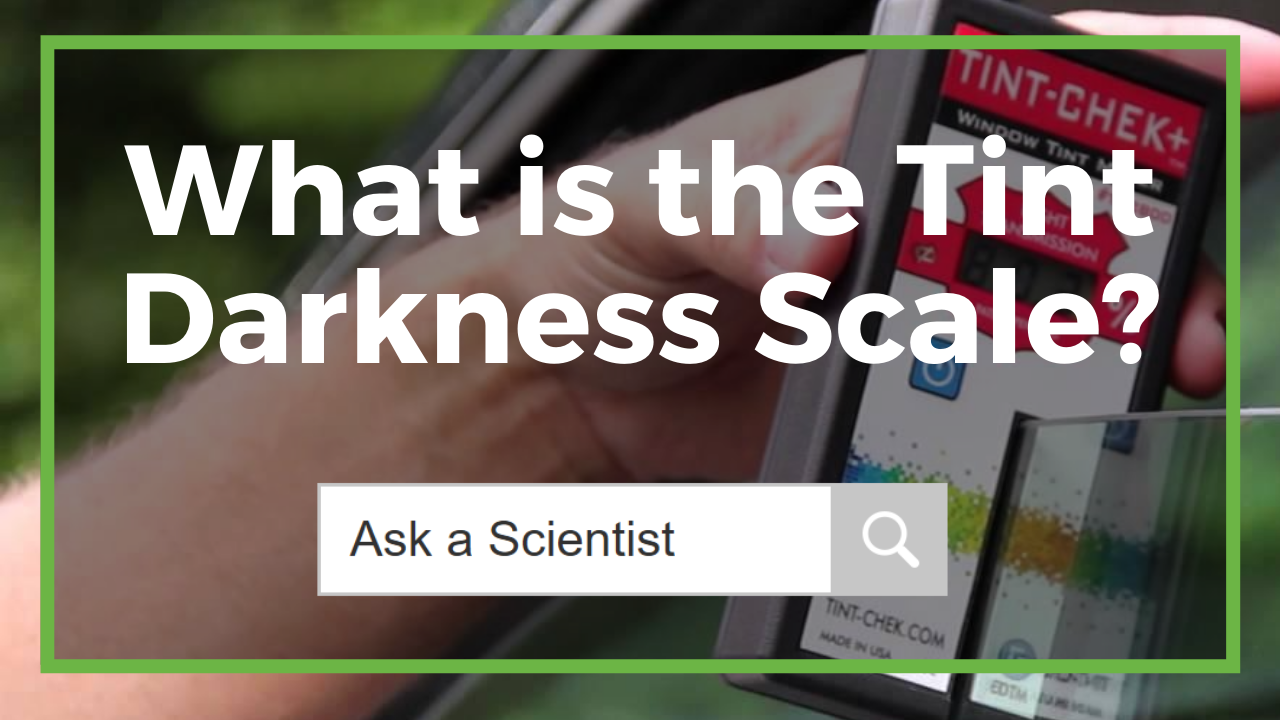What is the Tint Darkness Scale?

What is the Tint Darkness Scale
The tint darkness scale measures Visible Light Transmission and expresses readings as a percentage of transmission – that is, VLT%.
In this article, we explain what visible light transmission means, why checking tint levels in cars is essential, and examine the method tint meters use to obtain fast and accurate tint level measurements.
How Tint Meters Work
Tint meters are suitable for measuring almost any tinted, flat glass surface. They produce a light source (usually 550 nanometers) that shines through the glass you wish to measure. An optical sensor on the other side of the glass captures the result instantaneously. The darker the tint, the less light will make it from the source to the optical sensor.
The Role of Tint Meters in the Automotive Industry
The most common use for tint meters is testing the Tint Darkness Scale of car windows. Both tint installers and law enforcement officers employ these instruments to ensure that the saturation of tint meets safety regulatory standards.The VLT percentage of car windows must be safe, so drivers have adequate visibility at all times.
For a breakdown of window tint specifications organised by state, see Appendix 1 (below).
Tint Meter Examples
Instrument Choice Scientists have selected two examples of different styles of tint meters. Although they take the same measurement, these devices illustrate two major alternative design approaches that manufacturers take when creating tint meters that are effective for any window tint checking application. The alternatives are the two-piece unit or an all-in-one 'horseshoe' design.
 Tint-Chek Pro 2-Piece Window Tint Meter
Tint-Chek Pro 2-Piece Window Tint Meter
Product Code: IC-TC3800
The IC-TC3800 employs a unique two-piece design that enables the measurement of almost any flat piece of glass, including; windshields, rear windowsas well as any glass/film up to 6.5mm thick.
Tint Darkness Scale Range:0 to 100% Light Transmission
Accuracy: ±2 Percentage Points
Tint-Check Tint Window Tint Meter with Backlight
Product Code: IC-TC2800
The IC-TC3800 is an all-in-one design, window tint meter with a backlit LCD screen. Reliable and durable, this meter displays measurements to the nearest 0.1%. The horseshoe design allows users to place the meter over the glass they wish to measure.
Tint Darkness Scale Range:0 to 100% Light Transmission
Accuracy: ±1 Percentage Points
Conclusion
The most common application for tint meters is the checking of tinted automotive glass windows. Testing visible light transmittance or the Tint Darkness Scale is an essential measurement for tint installers and law enforcement officers to ensure adequate visibility and the safety of all road users.
Need a hand finding the best tint meter for your needs? Want more information about the tint darkness scale? Speak with an Instrument Choice Scientist! We're here to help! Call 1300 737 871 or email [email protected].
Appendix 1:
Automotive Tint Percentage by State
Across all states and territories within Australia, it is accepted that passenger vehicles should have no tint on the front windscreen and no less than 35% visible light transmission through the front driver and passenger windows. Some states and territories do conditionally allow for darker tints in windows behind the front passenger windscreens. This information is intended as a guide only, for comprehensive information, the regulations for each state, click the state link.
|
Front Side Windows |
Rear Side Windows |
Rear Window |
|
| SA |
35% |
20% |
20% |
| NSW |
35% |
35% |
35% |
| VIC |
35% |
20% |
20% |
| ACT |
35% |
20% |
20% |
| NT |
35% |
15% |
15% |
| QLD |
35% |
20% |
20% |
| WA |
35% |
20% |
20% |
| TAS |
35% |
20% |
20% |
Also interesting
Scales and balances are weighing devices used for many similar tasks, which can result in the names used interchangeably, hence creating some confusion. It is important to know the technical and practical differences between scales and balances when searching for a weighing solution that will meet your needs.

Sound level meters are popular tools for a range of applications and industries. If you already have a sound level meter or have been looking for one, you have likely come across the terms Class 1 or Class 2. In this article, we will explain the difference between the two meters and give some excellent examples of both types of meter.


